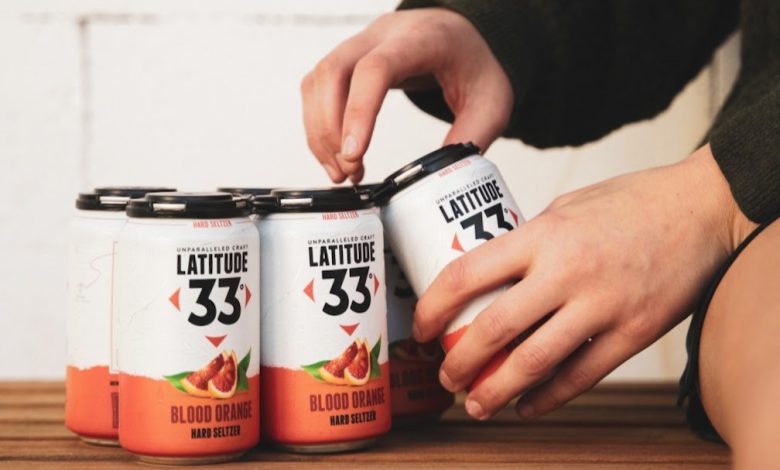
When someone refers a beer’s tap handle as being “sticky,” they’re not saying it needs a thorough cleaning. This term describes how tough it is for a brewery or distributor sales rep to get their beers on-tap at a location in lieu of said “sticky” brand. For the better part of the past decade, few handles have been stickier locally than Latitude 33 Brewing’s Blood Orange IPA. Even though the fruited-IPA trend that helped it zoom to the front of the pack has passed, this beer remains a top-seller in San Diego County and accounts for the majority of Latitude 33’s overall production. So, it’s no wonder that, in venturing into the currently trendy hard-seltzer market, the company is leading once more with a familiarly successful fruit.
At the beginning of December, six-packs of Latitude 33’s first seltzers started showing up on store shelves. Blood Orange is the sole flavor available at present, but Mango and Prickly Pear varieties are scheduled to debut next February and limited releases in four-packs of 16-ounce cans are planned for later in 2021.
“Starting from scratch in 2018, we honestly had no idea how to brew a seltzer. We did as much research as possible, discussed with other brewers in the industry, and then just began brewing iteration after iteration and testing them in our tasting room,” says Latitude 33 owner Mike Ingram, who has since moved the company out of the Vista brewery it occupied for eight years. “To get us to the finish line, we partnered up with what I’d call a local seltzer expert who helped us polish and launch the final product, and we honestly couldn’t be more stoked about where we landed.”
Latitude 33’s seltzer line was developed as a solution to Blood Orange IPA fans’ requests for a lighter, lower-alcohol counterpart to the 7.2% alcohol-by-volume flagship beer. The Blood Orange Hard Seltzer comes in at 99 calories and is low in carbohydrates with no sugar added.
“We’ve always leaned into the needs of our customers, first and foremost,” says Ingram. “In an arena as competitive as Southern California craft beer, the moment you stop paying attention to changing customer preferences and meeting the dynamic needs of your fan base is the day you’re no longer relevant.”
Ingram says his team went to lengths to try to avoid producing seltzers with syrupy textures, overly aggressive carbonation and unpleasant booziness, and that a proprietary spirit base and all-organic ingredients help Latitude 33’s seltzers come across with fruit flavors that don’t come off as artificial and aren’t marred by carbonic bite.
“We said early on that if our team wasn’t absolutely obsessed with the final product, we wouldn’t launch,” says Ingram. He says it took months longer than expected to get to that point. “As much as we would have loved to release our seltzers in the spring to help ease the pain of the pandemic and related lockdowns, it was definitely worth the wait.”

